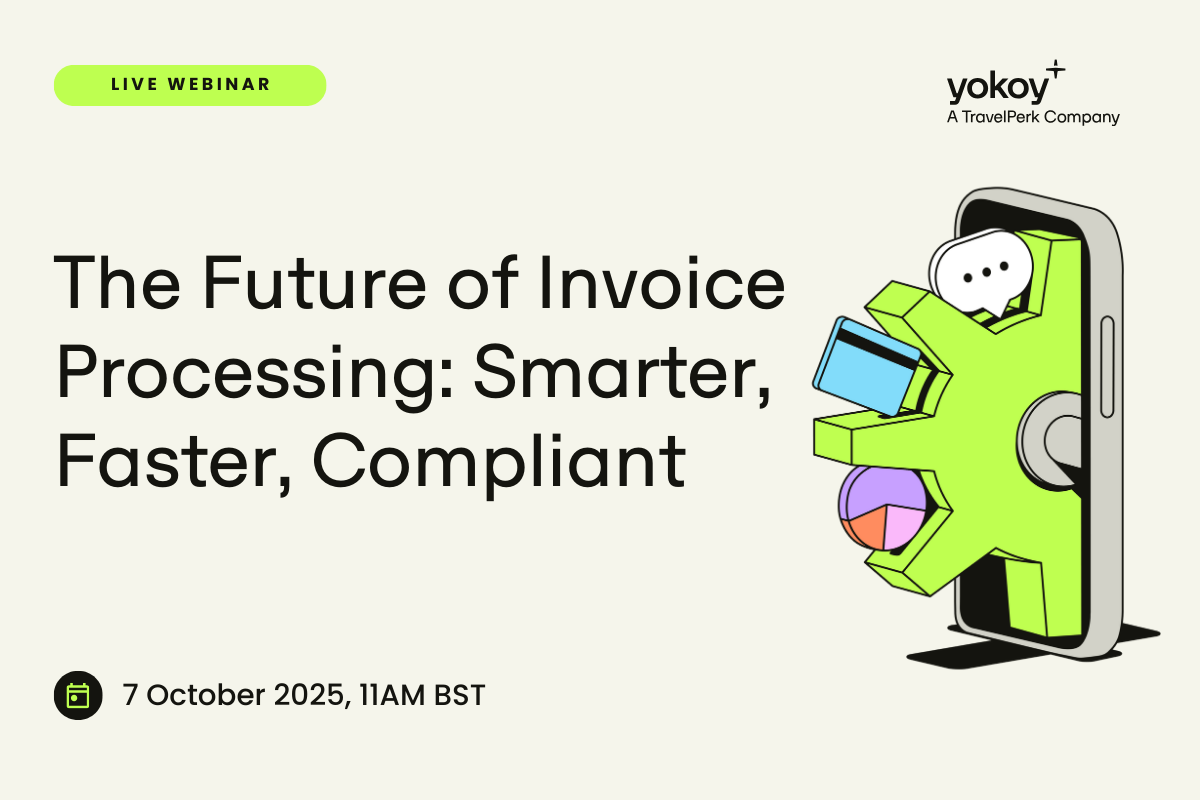Home / What is Intelligent Invoice Automation Software Anyway?
What is Intelligent Invoice Automation Software Anyway?
- Last updated:
- Blog

In your career, you surely have come across a sentence like “we’ve been doing it since X years, and there has never been a problem with our ‘process’”. Fair enough, but what if your “process” turns out to be slow, inefficient, and out of touch with today’s digital reality? Let us show you how invoice automation software can support you in leading the way to a new process with much smarter workflows.
Invoice automation with artificial intelligence
Needless to say, technology can be of great use to streamline and simplify the process of managing and processing invoices. Automating repetitive and manual tasks such as data entry, validation, approval workflows, and payments is just one of the cornerstones of automated invoice processing. This aims to improve efficiency, reduce errors, and accelerate the overall invoicing process for better cash flow, more significant cost-savings and improved operational performance for your business needs.
Accounts payable automation with Artificial Intelligence (AI) can play a pivotal role in more intelligent invoice management and boost the efficiency of finance teams. AI technologies enable the system to perform complex tasks that require human-like cognitive abilities, such as understanding, learning, reasoning, and self-correcting.
See how AI contributes to invoice automation:
Data extraction: AI-driven tools use Optical Character Recognition (OCR) and Intelligent Document Processing (IDP) to extract data from various invoice formats, including scanned documents, PDFs, and emails. This eliminates the need for manual data entry.
Data validation: Machine Learning (ML) algorithms validate extracted data against predefined rules and historical data, ensuring accuracy and consistency. This step checks for discrepancies, such as mismatched amounts or incorrect vendor details.
Automated workflows: AI automates the entire AP process, from receipt and approval to payment. Robotic Process Automation (RPA) uses AI to handle repetitive tasks within your accounting software, routing invoices through predefined audit trails.
Exception handling: AI systems in AP automation solutions can detect anomalies and exceptions that deviate from normal patterns. By learning from past data, they can flag potential issues such as duplicate invoices, fraudulent entries, or unusual spending patterns.
Natural Language Processing (NLP): With NLP, AI can understand and interpret unstructured text, such as emails and notes on invoices. This allows for seamless communication and processing of invoice-related information from diverse sources.
Predictive analytics: AI-powered predictive analytics can forecast cash flow needs, predict invoice approval times, and provide metrics for spending patterns. This helps in better financial planning and decision-making.
As you can see: There is a lot of power in invoice automation with AI!
Different types of AI and their value for invoice management
From our experience, we can say that understanding the various types of AI and their applications in invoice management is essential for selecting the right tools to enhance your invoicing processes.
Generative AI
Generative AI is an application of artificial intelligence designed to create new content by learning from existing data. This can include generating text, images, or even software code, making it a powerful tool for content creation and innovation across various fields.
How generative AI supports invoice management
Although generative AI is currently the best-known AI from a consumer perspective, thanks to tools like ChatGPT, it has not yet significantly influenced invoice management. Its potential future applications could involve generating customised responses to vendor inquiries or creating detailed financial reports based on invoice data. However, these uses are still largely theoretical at this stage.
Predictive AI
Predictive AI is an application of artificial intelligence that identifies patterns in past events to predict future outcomes. By analysing historical data, it can forecast trends and behaviours, providing valuable insights for decision-making.
How predictive AI supports invoice management
Predictive AI supports invoice management by learning from past behaviour to predict future outcomes. For instance, it can analyse historical payment data to forecast which invoices will likely be paid late. This allows businesses to proactively manage cash flow and address potential issues before they arise.
Prescriptive AI
Prescriptive AI is an application of artificial intelligence that uses available data to recommend the right course of action to achieve a particular outcome. It goes beyond predicting future events by suggesting specific actions to optimise results.
How prescriptive AI supports invoice management
Prescriptive AI enhances invoice management by recommending the next actions to achieve desired outcomes. For example, if predictive AI indicates a high likelihood of late payment from a client, prescriptive AI might suggest offering early payment discounts or adjusting payment terms. This helps businesses proactively address issues and optimise their workflows.
Where Predictive AI might flag a customer as likely to churn, prescriptive AI recommends actions to prevent this, such as offering free shipping. Similarly, predictive AI can identify potential late payments in invoice management, while prescriptive AI suggests strategies to reduce these risks and improve overall financial management and service.
Important to know: OCR and RPA are not AI
OCR converts documents like scanned papers, PDFs, or images into editable, searchable digital text. OCR’s accuracy is compromised by poor document quality, unclear text, or non-standard fonts. RPA, on the other hand, uses software robots to automate repetitive, rule-based tasks such as data entry and invoice matching. However, RPA and OCR strictly follow pre-defined scripts, lack scalability and learning capabilities, and cannot handle complex decision-making independently. Unlike AI, neither OCR nor RPA can learn, adapt, and make autonomous decisions, and they lack context understanding. Both systems are valuable tools for digitising documents and automating tasks but do not possess the adaptive learning capabilities of AI.
The best invoice automation software uses true intelligence
True intelligence in invoice automation software comes from using AI as a foundational technology that successfully incorporates a combination of generative, predictive, and prescriptive AI. Generative AI can create customised responses and detailed reports; predictive AI identifies patterns from past data to forecast future outcomes, such as predicting late payments; and prescriptive AI recommends specific actions to address potential issues, like suggesting early payment discounts. Together, these AI technologies are able to provide a comprehensive, adaptive, and proactive approach to invoice management. The software can truly be smart and capable of significantly enhancing efficiency and accuracy.
Compared to legacy technologies, real progress is possible with AI in the following areas:
Automated workflows
AI-driven invoice automation software can dynamically manage and optimise workflows based on real-time data. Unlike legacy systems that rely on static rules and manual oversight, AI systems can automatically route invoices for approval, flag discrepancies, and adjust workflows on the fly. This allows for faster processing times and reduces typical bottlenecks that your business might experience at the moment.
Less manual tasks
AI significantly reduces the need for manual intervention by automating repetitive and time-consuming tasks. Legacy systems often require substantial human effort for data entry, validation, and reconciliation. AI-powered systems, through technologies like RPA, can handle these tasks autonomously, freeing up staff to focus on more strategic activities and reducing the potential for burnout.
Improved data capture
With advanced AI technologies such as Optical Character Recognition (OCR) and Intelligent Document Processing (IDP), data capture from invoices becomes more accurate and efficient. While legacy systems might struggle with varied formats and unstructured data, AI systems can seamlessly extract relevant information from diverse document types and formats, ensuring higher accuracy and faster processing.
Less human errors
AI reduces the incidence of human errors common in manual data entry and processing. Legacy systems tend to make mistakes due to manual input, which can then lead to costly discrepancies and delays. AI’s ability to validate and cross-check data against historical records and predefined rules ensures greater accuracy and consistency, minimising errors and enhancing data integrity.
Improved compliance
Compliance with regulatory requirements and internal policies is a must in invoice management. AI systems can automatically enforce compliance by monitoring real-time transactions to make sure all invoices meet the necessary standards and regulations. Unlike legacy systems, which require manual checks and updates, AI can adapt to new regulations quickly, ensuring ongoing compliance and reducing the risk of penalties and audits.
How Yokoy’s AI-powered invoice automation software improves invoice management
Yokoy’s AI combines OCR, machine learning, and NLP to streamline and enhance invoice processing automation. The AI uses OCR first to accurately capture and digitise text from various document formats, such as scanned invoices and PDFs. Machine learning algorithms then analyse historical data and patterns in your accounting system to improve the accuracy of data extraction and classification. Meanwhile, NLP capabilities enable the system to understand and interpret unstructured data, such as notes and invoice comments. These technologies allow Yokoy’s AI to automate data entry, match invoices to purchase orders, and accurately flag discrepancies, ultimately reducing manual processes and errors.
Yokoy’s invoice management solution offers several key features designed to optimise and simplify the invoicing process:
- Automated data capture: Yokoy leverages advanced OCR and machine learning to automatically extract and digitise data from invoices, reducing the need for manual data entry and increasing accuracy within your ERP system.
- Intelligent matching: The system automatically matches invoices with corresponding purchase orders and receipts, ensuring all data aligns correctly and flags discrepancies for review.
- Approval workflows: Yokoy facilitates streamlined approval processes by routing invoices through configurable workflows, allowing for efficient and error-free approvals based on predefined rules and roles.
- Real-time analytics: The platform provides real-time insights and analytics on invoice processing, helping your business monitor performance, identify trends, and make informed decisions to optimise your approval processes and overall financial operations.
- Compliance and security: Yokoy helps your team reduce non-compliance with regulatory requirements by automatically applying and enforcing necessary standards and policies, while also providing robust security features to protect sensitive financial data.
Next steps
Are you interested in discovering how Yokoy’s advanced AI-driven invoice management solution can transform your financial processes? Book a demo to see Yokoy’s AI power in action and explore how our innovative solutions can bring your invoice management to the next level.
In this article
Simplify your invoice management
Book a demoRelated content
If you enjoyed this article, you might find the resources below useful.


